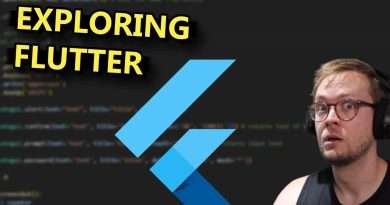BroadcastReceiver Tutorial Part 2 – DYNAMIC RECEIVERS – Android Studio Tutorial
In part 2 of the BroadcastReceiver tutorial, we will learn how to register a BroadcastReceiver dynamically. Instead of putting the receiver into the Manifest file, we register it in the lifecycle of our application. This way the BroadcastReceiver lives as long as the context where we register it in. This could be the application context itself, which would keep our BroadcastReceiver running as long as our app is running, but also for example the activity context or only as long as our app is in the foreground.
For this we have to call the registerReceiver method in any of the lifecycle callback methods (onCreate, onStart, onResume) and unregisterReceiver in their appropriate counterpart (onDestroy, onStop, onPause).
When we register our BroadcastReceiver, we also have to pass an IntentFilter, which specifies the action we are listening for.
Within the onReceive method of the BroadcastReceiver, we can also obtain data that is sent as an extra over the broadcast intent.
Watch the whole playlist:
Example code for this part:
https://gist.github.com/codinginflow/fb64c0f42ac5519633cfde80965f148b
____________________
💻 Find the BEST programming tutorials on TutHub:
https://tuthub.io
⭐ Get my MVVM Caching Course now:
https://codinginflow.com/caching
❗ Subscribe to the channel:
https://www.youtube.com/c/codinginflo…
📨 Subscribe to the Coding in Flow newsletter:
https://codinginflow.com/newsletter
❓ Join our free developer community:
https://discord.gg/TSnMvmc
📣 Follow Coding in Flow on other sites:
Facebook: https://www.facebook.com/codinginflow
Instagram: https://www.instagram.com/codinginflow
TikTok: https://www.tiktok.com/@codinginflow
Twitter: https://twitter.com/codinginflow
Github: https://github.com/codinginflow
💰 Business requests, sponsoring, etc.: info@codinginflow.com
Views :53045
android studio




